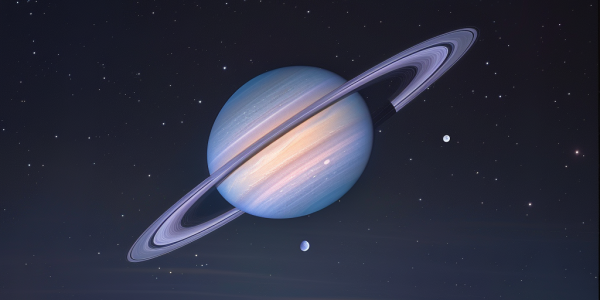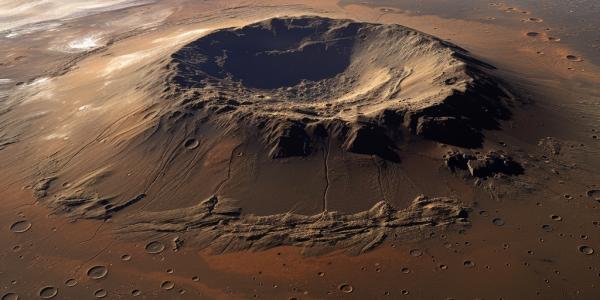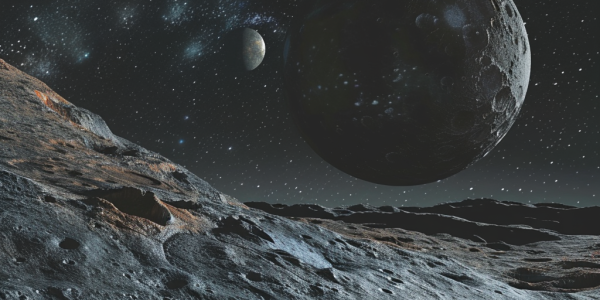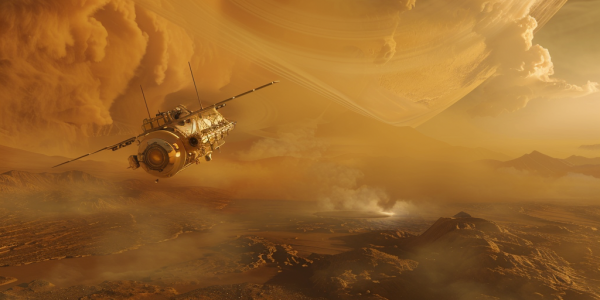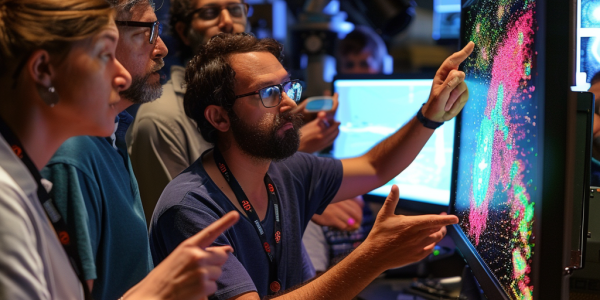Navigating Privacy and Meteorite Origins in the Digital Age
Explore the critical intersection of user privacy and astronomical research in our digital age. Learn how cookie management impacts personal data protection and discover groundbreaking findings on meteorite origins that enhance our understanding of planetary formation. Stay informed about your privacy choices and the broader implications of celestial studies.
Rare Celestial Event: Saturn’s Moons to Shine as Rings Narrow
Astronomy enthusiasts are in for a treat as Saturn’s rings narrow, making way for a rare celestial event. Mark your calendars for March 23, 2025, when Saturn’s rings will appear nearly edge-on, offering unique viewing opportunities for stargazers. This event, occurring every 13.5 to 15.7 years, coincides with multiple chances to observe Saturn’s moons, including Dione and Tethys, making it an exciting time for both seasoned astronomers and newcomers. Don’t miss the chance to witness the beauty of Saturn and its moons in the night sky!
New Study Challenges Moon’s Origins, Proposes Capture from Binary System
A recent study from Penn State University challenges the long-held giant impact hypothesis of the Moon’s formation, proposing instead that the Moon may have been captured from a binary system of celestial bodies. This groundbreaking research, led by Professor Darren Williams, highlights the Moon’s orbital alignment as evidence for this new theory, opening up possibilities for understanding the origins of other moons and planetary systems in our solar system.
NASA’s Mars Odyssey Orbiter Captures Breathtaking Image of Olympus Mons, Largest Volcano in Solar System
NASA’s Mars Odyssey orbiter captures a stunning image of Olympus Mons, the largest volcano in the solar system. Standing at 17 miles tall and 373 miles wide, this colossal shield volcano on Mars is showcased in all its grandeur. The image reveals the volcano’s caldera at its peak, surrounded by the Martian atmosphere with colorful bands of dust, water-ice clouds, and red dust layers. This unprecedented view offers valuable scientific data for researchers, providing insights into Mars’ geological features and atmospheric conditions.
New Research Suggests Rocky Exoplanets More Likely to Host Large Moons
Recent simulations suggest that smaller rocky exoplanets are more likely to host large moons, shedding light on the formation of Earth’s moon and potential exomoons around other planets in the universe. Scientists explore the concept of ‘streaming instability’ in moon formation, revealing challenges for moon survival and implications for the search for exomoons beyond our solar system.
Mysterious Disappearance of Water on Venus Linked to Methanaldehyde Ion
Recent research suggests that the molecule HCO+ may be responsible for the disappearance of water on Venus, transforming the planet into a desert wasteland. Scientists from the University of Colorado at Boulder propose that HCO+ evaporating into space is depleting Venus’ water reserves, leading to its arid conditions. Future missions like VERITAS and DAVINCI are needed to study these molecules further and understand the mechanisms behind Venus’ water loss.
Symphony of Planet 9: A Musical Ode to the Mysterious Celestial Body
Experience the captivating symphony inspired by the mysterious Planet 9, composed by Miami Symphony conductor Eduardo Marturet and performed by the Caltech orchestra. Delve into the gravitational dynamics of our solar system through this musical masterpiece, a collaboration between Marturet and Planet 9 researcher Konstantin Batygin. Recent breakthroughs reignite hope for discovering Planet 9, supported by compelling evidence presented in a new paper by Batygin, Brown, Morbidelli, and Nesvorny. Explore the avant-garde narrative of Planet 9 taking on a life of its own, as the symphony delves into the intellectual pursuit behind the hypothesis.
Remains of ‘Buried Planet’ Uncovered Deep Within Earth, Potentially Linked to Moon-Forming Impact
Scientists have made a fascinating discovery deep within the Earth, uncovering the remains of a ‘buried planet’ possibly linked to a moon-forming impact 4.5 billion years ago. Seismologists identified massive ‘basal mantle anomalies’ beneath the Pacific and Africa, suggesting a unique material composition. Researchers speculate these anomalies could be remnants of a planet named Theia, offering insights into Earth’s collision history and moon formation. The discovery opens new avenues for understanding celestial collisions and planetary dynamics.
Unveiling the Effects of Space Environment on Asteroid Ryugu
A recent study led by Professor Yuki Kimura at Hokkaido University and researchers from 13 other institutions in Japan delves into the effects of the space environment on asteroid Ryugu. Utilizing samples collected by the Hayabusa2 spacecraft, the research uncovers new insights into the magnetic and physical bombardment experienced by objects in interplanetary space. This groundbreaking research sheds light on the long-term effects of space exposure and offers valuable insights into the magnetic properties of the asteroid.
Scientists Discover Evidence of Planet Nine in Our Solar System
Scientists have made a groundbreaking discovery pointing to the existence of an unknown planet within our solar system, referred to as Planet Nine. Leading astronomer Konstantin Bogytin and his team have uncovered compelling evidence supporting this theory, highlighting the influence of an undiscovered planet on the unusual orbits of trans-Neptunian objects. The activation of the Vera C Rubin Observatory in Chile is expected to provide further insights into this mysterious celestial body.


